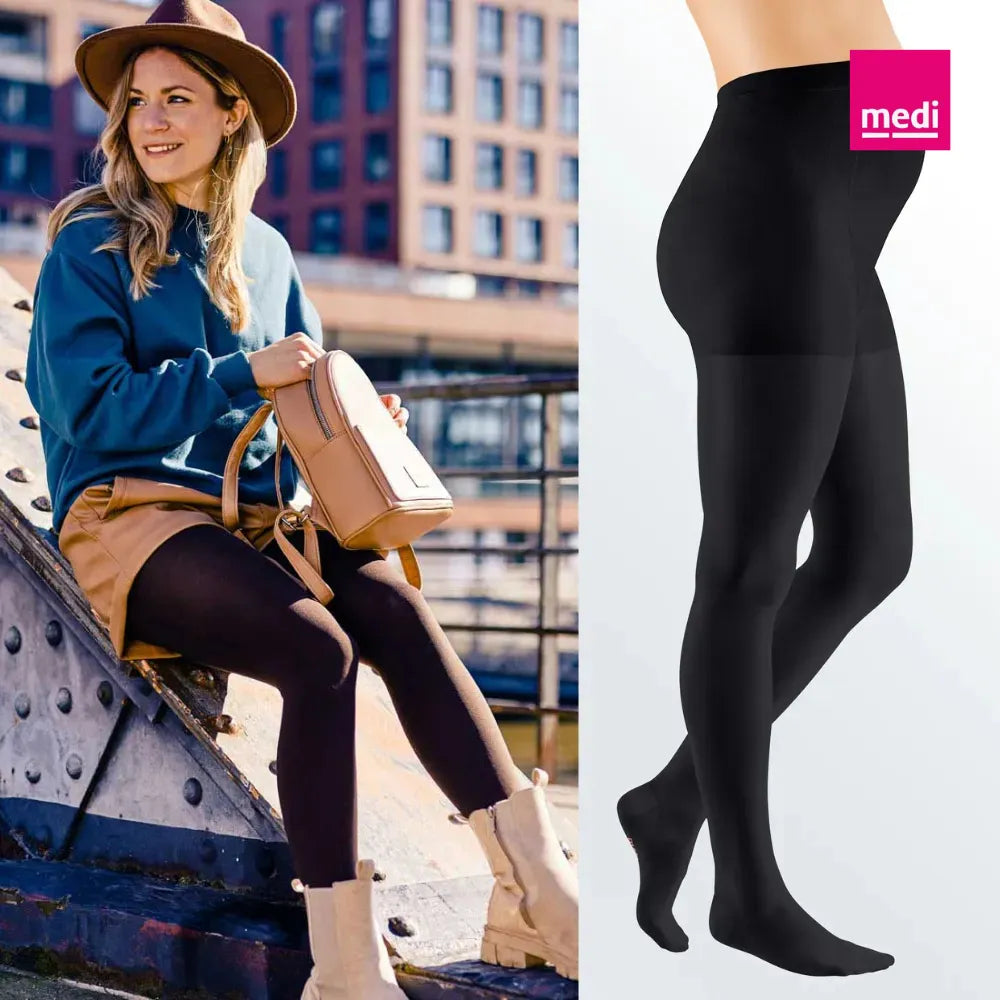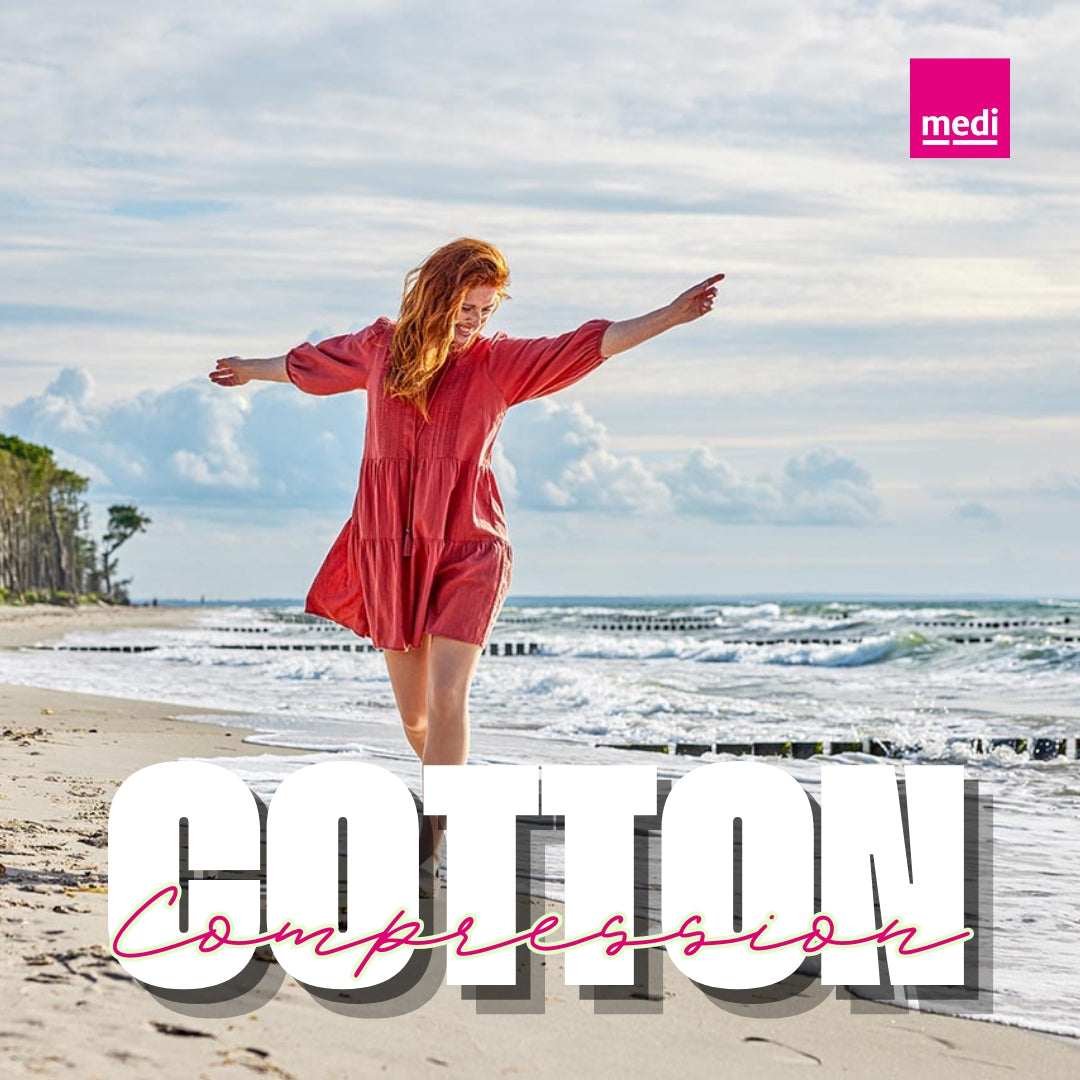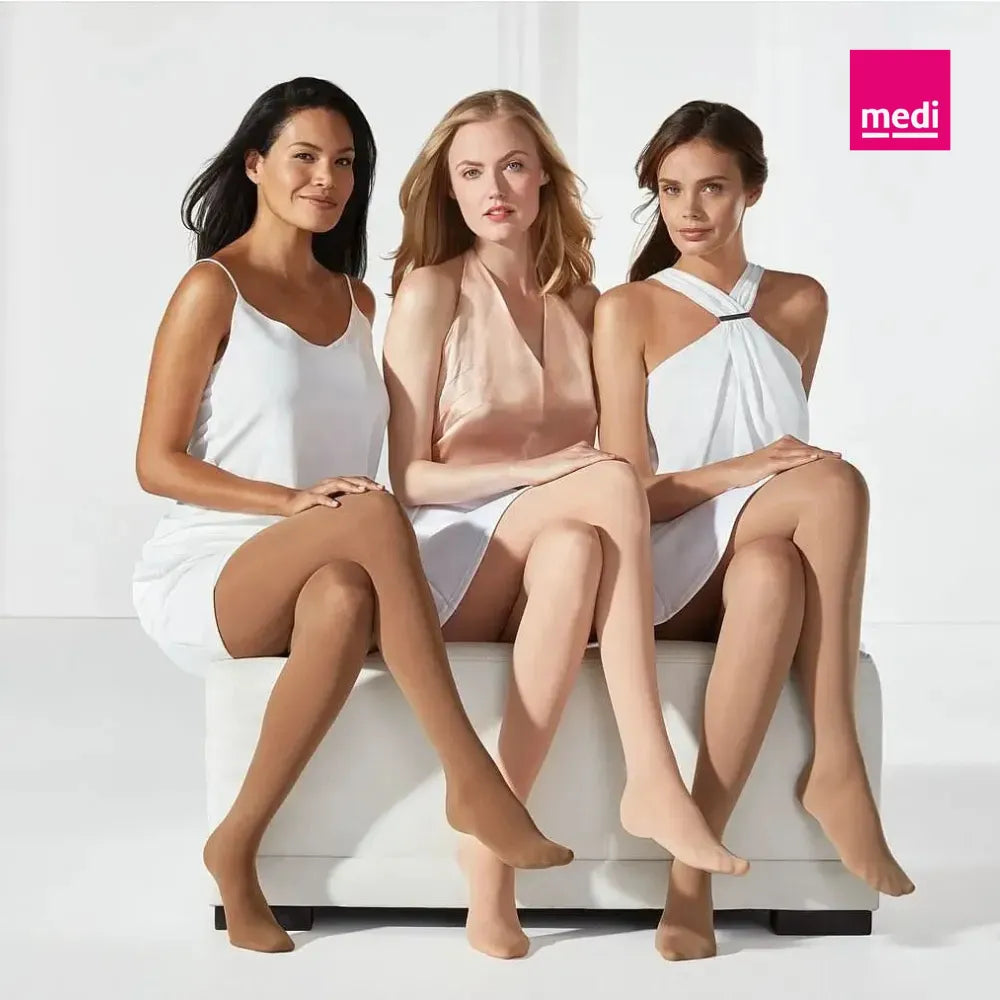Compression Pantyhose: The Practical Guide to Women's Leg Health and Comfort
Compression pantyhose has changed a lot in recent years, moving from medical-only wear to must-have wellness accessories for women of all ages. With more than 6,600 monthly searches for "pantyhose" and 1,300 for "compression stockings for women," there is no doubt that the interest is high. medi is here to you offer some useful information on compression pantyhose, answering frequently asked questions and elaborating their advantages for daily use.
Understanding Compression Pantyhose
It is distinct from regular garments in structure and purpose. Regular pantyhose might provide slight, equal pressure, compression pantyhose provides graduated pressure, greatest at the ankle and decreasing gradually up the leg.
This medical technique for supporting the leg aids maximum blood flow by helping the veins propel blood against gravity and back toward the heart.
Contemporary compression garments merge this therapeutic pressure with modern fashion and materials, thus making them suitable for workplaces, formal events, and everyday wear. The once-stigmatised compression clothing has largely been a thing of the past since producers now have stylish alternatives that look no different from regular hosiery.

Pregnant women tend to experience quite a lot of leg pain during pregnancy due to hormonal imbalances, increased blood levels, and weight gain. These contribute to:
Recurring leg swelling and oedema
Risk of varicose veins
Leg tiredness and heaviness
Night cramps and restless legs
It can address these problems effectively by improving circulation and giving structural support to the veins. Obstetricians recommend elastic therapeutic garments as a routine component of prenatal care, especially during the second and third trimesters, when symptoms usually become worse.
Professional Applications
Women working in many different professions can gain from elastic therapeutic garment, such as:
Healthcare professionals: Nurses and other healthcare professionals who stand for long periods
Hospitality and retail workers: Those who spend their shifts on their feet
Office professionals: People who get circulation problems from sitting for long periods
Flight attendants and frequent flyers: People who are exposed to pressure changes at altitude and in small spaces
Teachers: Teachers who move between standing and sitting all day
Studies have shown that accurate pressure will decrease end-of-day leg fatigue by as much as 30% in jobs that involve standing or sitting for long periods.
Compression Pantyhose vs. Regular Pantyhose
One of the most common questions in our queries is whether to use regular pantyhose as an alternative to elastic therapeutic garments. Although standard hosiery might be uncomfortable and feel constricting, it usually delivers less than 8 mmHg of non-graduated pressure, not enough for therapeutic purposes.

Real compression pantyhose has certain technical specifications:
Supplying exactly quantified pressure in mmHg (millimetres of mercury) offers graduated pressure, with a specific pressure decrease up the leg.
Have balanced pressure throughout the whole period of wear
Use materials engineered for therapeutic use.
For real circulatory benefits, medical-grade elastic therapeutic garment is a must. The up-front cost of investing in good elastic therapeutic garment clothing will eventually be more cost-effective than buying regular pantyhose that will not deliver the therapeutic benefits required.
Material Considerations
The Mediven Cotton Pantyhose line is a significant advancement in compression technology—the blend of natural fibres with therapeutic pressure.
The choice of material has a profound effect on both comfort and compliance. Patients who report that their elastic therapeutic garment are comfortable are more likely to wear them regularly, maximising therapeutic gain.
Although it is generally helpful for most users, the following conditions are a concern:
Peripheral arterial disease or impaired arterial circulation
Severe diabetes, particularly with peripheral neuropathy
Dermatological disorders like eczema or dermatitis
Active skin infections or open sores
Pulmonary oedema or congestive heart failure
Severe leg deformity that hinders the correct fit
These conditions do not automatically exclude compression therapy but can necessitate special products or adjusted pressure levels under medical guidance.

Choosing Your Elastic Therapeutic Garment
When choosing elastic therapeutic garment, focus on adequate fit, proper pressure levels, and compliant materials. For individualised advice, especially for certain specific medical conditions or pregnancy-related issues, consult healthcare professionals. With adequate selection and usage, it will greatly contribute to the quality of life and leg health of all women, regardless of age.
Always consult a doctor before starting any new health routine.





Leave a comment
This site is protected by hCaptcha and the hCaptcha Privacy Policy and Terms of Service apply.